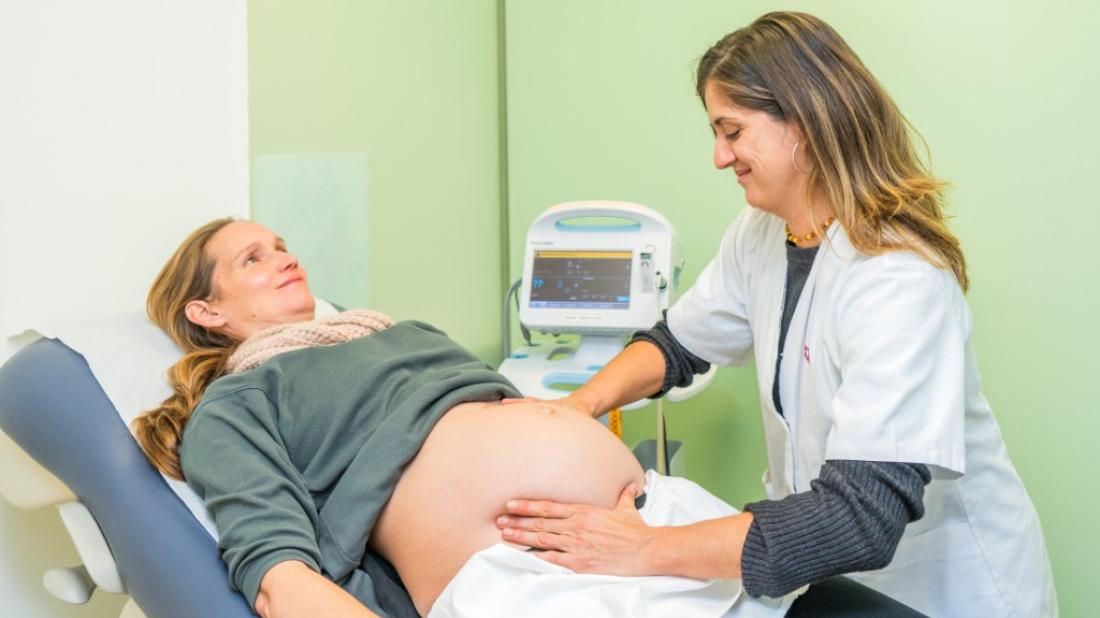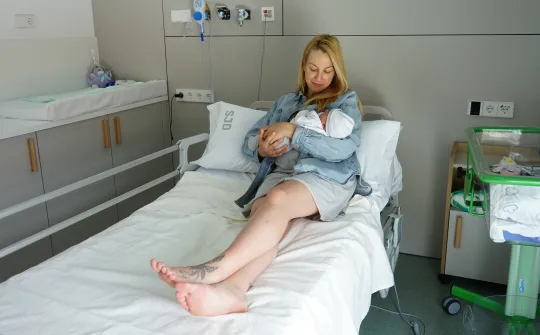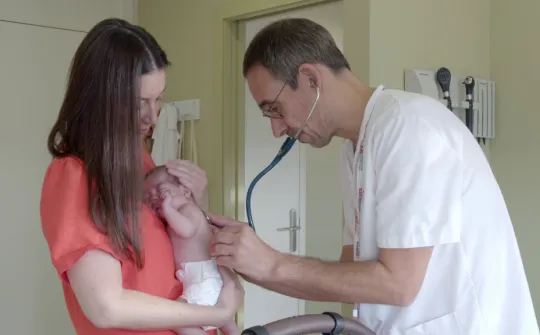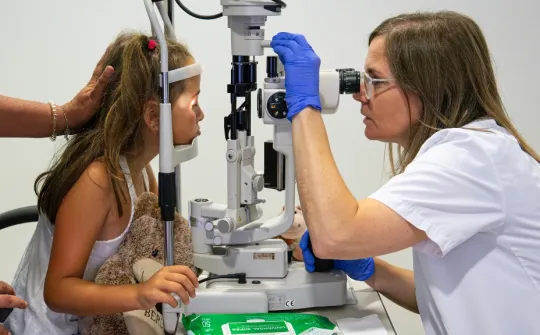The SJD Barcelona Children's Hospital offers pregnant patients whose waters have broken but do not have any contractions the option to stay at home

The Wait programme aims to empower women, making them an active part of the decision-making process and facilitating their rest.
The SJD Barcelona Children's Hospital has launched a programme that offers pregnant patients whose waters have broken, but have no contractions, the option to stay at home until their contractions start—up to a maximum of 24 hours—marking the start of active labour.
The Wait programme is intended for low-risk patients in the final days of a full-term pregnancy. It aims to empower women, making them an active part of the decision-making process and facilitating their rest and comfort in the pre-birth period in the location of their choice. Each week, faculty members at the Maternal-Fetal Medicine and Obstetrics Department welcome an average of five patients who meet the programme's entry requirements.
One in ten patients have their waters break before active labour. The real signal and driving force of labour are contractions, which sometimes take hours to begin. Evidence shows that more than half of these patients whose waters have broken but have no contractions will take more than 24 hours to begin active labour. Until now, these women spent this period in hospital. Now we are offering the possibility of returning home to wait for active labour to begin.
“We want the mother to feel empowered and in charge of the birth, to feel that she has a say in decision-making, and if she so wishes, that she can spend the time before birth at home, in her own bed, walking around her home, etc. Essentially, we want mothers to be in a familiar environment, which will help keep them calm during the birthing process”, explains Soraya Diéguez, midwife at the SJD Barcelona Children's Hospital. “That feeling of a ticking clock leads to higher adrenaline and cortisol levels in the mother's system, which inhibits the hormone that can help trigger active labour, oxytocin.”
In countries in Northern Europe, the UK, and Australia, among others, birthing practices already follow this protocol of up to 24 hours at home for low-risk pregnancies. The SJD Barcelona Children's Hospital has also launched this protocol because it has confirmed that it is both safe and improves patient experience. “The risk of maternal infections in these cases is minimal. When active labour begins 24 hours after waters breaking, the risk only increases by 0.5%, and even after that, it does not increase by over 1%. And there are no cases where this minute increase in risk results in an increased need for instrumental births or increased morbidity rates or newborn hospitalisation”, explains Dr. Patricia Ferrer.
Entry requirements for the Wait programme
Candidates for the Wait programme must be low-risk pregnancies who are expecting only one baby, and the pregnancy must be full-term. Furthermore, the child should be in cephalic presentation; when the mother's waters break they should be clear; and the Streptococcus agalactiae test (done at the end of the pregnancy) should be negative.
When the patient arrives at the Hospital after their waters have broken, the attending professionals will carry out several tests to make sure both mother and child are in a good condition overall. They will check that the mother presents no fever symptoms or signs of infection, and that fetal movements are all normal. With this information, the team will assess whether the mother should be induced, or whether she is able to wait.
If the mother can wait, and she lives less than 45 minutes away from the Hospital, the team will provide two options: either be admitted to the ward or wait at home. Women who take part in the programme will be given information and several recommendations about warning signs signalling when they should return to hospital (for example, if waters change colour, the mother feels feverish or contractions begin). They will also be given a phone number of a Hospital midwife who will answer any questions at any time. When they leave the centre, patients will already have an agreed time to return should contractions not begin beforehand.
“Women who chose to take part in the Wait programme have rated it very positively. Some women take a long time to begin active labour, being in pre-labour for hours. They can spend a lot of time in hospital because, on top of pre-labour, you have to add induction time, which is normally long, and then the birth itself. When all is said and done, several hours have passed, and no matter how calm the mother is during it, some of them really struggle with that aspect”, adds Soraya Diéguez.




